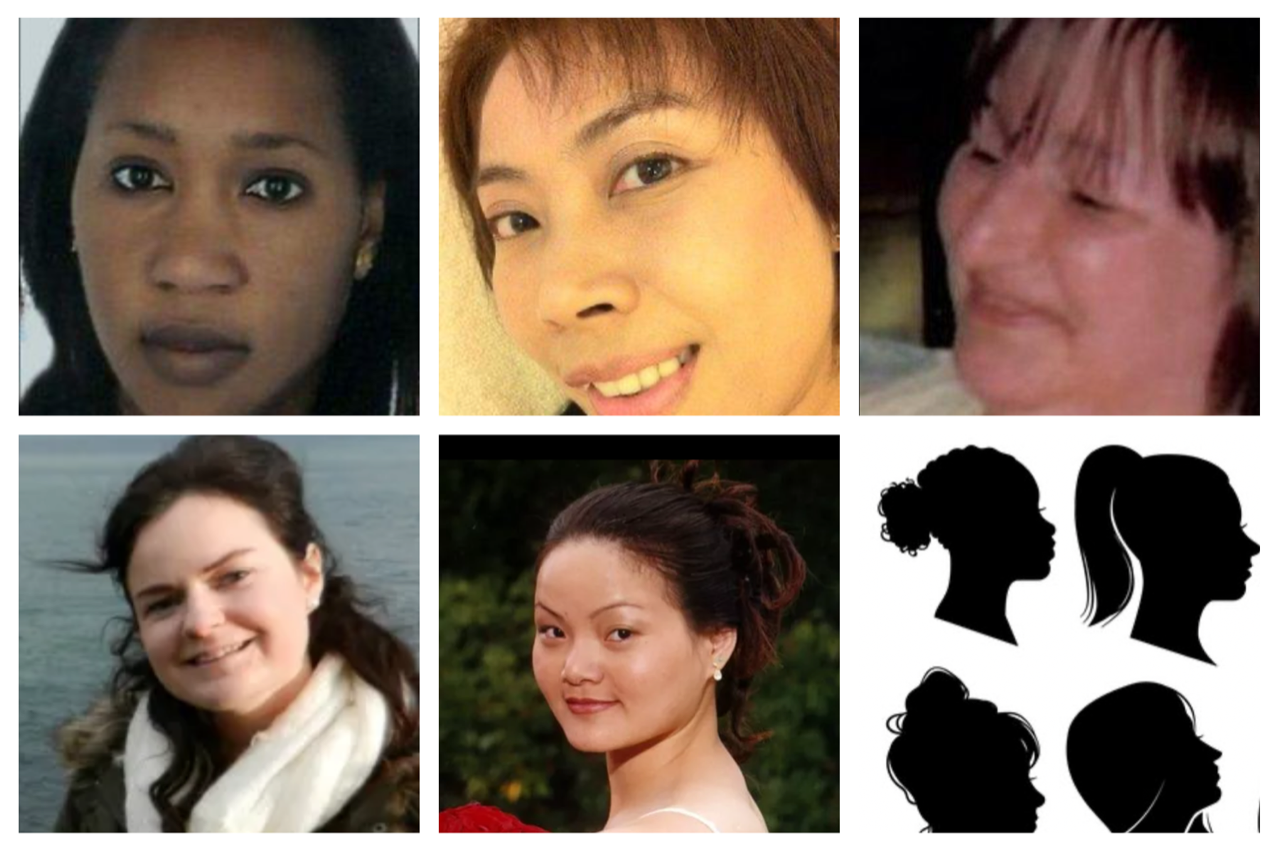My speech at the FiLiA conference – 14 October 2023
I wonder how many of you noticed the sign that said ‘Transphobia kills us …. and hurts women’ held by one of the welcoming committee that greeted us as we arrived at the conference yesterday?
The thing is, as far as week know, there have never been a single murder of a trans identified person in Scotland. But women, between 2009 and 2021, at least 151 women were killed by men in Scotland. That’s an average of about one woman killed by a man every month. Our panel today is looking at lost voices of women and I’d like us to remember these women, their lost voices.
In this constituency alone – Glasgow Central – between 2009 and 2021, seven women have been killed by men. Let’s remember the lost voices of
- Fatou Saine
- Khanokporn Satjawat
- Josephine Steel
- Karen Buckley
- Amalet Francis (not pictured)
- Xin Xin Liu, and
- Nasreen Buksh (not pictured).
Two of these seven women were killed by men who were strangers, five by partners or ex-partners.
We will not allow men’s rights activists to make these women invisible.
Anyway, back to the talk I’d prepared ….
One of the things I’m most frequently asking is how we can – or even whether we can – end men’s violence against women.
We talk about domestic violence and abuse, child sexual abuse, rape, sexual violence, sexual exploitation, prostitution, FGM, sexual harassment and so on as forms of men’s violence against women and girls. Often the reality of women’s lives is that it is not either/or, that what is done to them crosses boundaries between these abuses and violations to which women and girls are subjected to by men.
On top of this, there are countless other crimes, micro-aggressions and behaviours which don’t meet crime thresholds but do negatively affect, restrict and reduce the lives of women and girls.
Then there is femicide, the killing of women by men.
I started counting, commemorating and recording the killings of women by men in the UK in 2012. In 2013, my Femicide Census co-founder and executive director, Clarrie O’Callaghan had our first conversation about working together on the project that would become the Femicide Census, which we launched in 2015. The Femicide Census is now the UK’s most comprehensive source of information about women killed by men in the UK since 2009 and the men who – and circumstances in which -they killed them. We have over 2,000 women identified on our database. Since we started, the average of one woman in the UK killed by a man on average every 3 days has remained depressingly consistent.
How do we stop this?
Top of the list, I put that we need to see the connections between all forms of men’s violence against women and girls and that this is necessary for meaningful social change.
Seeing these connections is an absolutely critical step in ending men’s violence against women. But it is an early step in a very long road and there are constantly push backs, sometimes dressed up as progression. In 2010, the then coalition government launched its strategy, the ‘Call to End Violence against Women and Girls’, that strategy has been revised twice, but just over a decade later and after many years in the making – the creation of the Domestic Abuse Act. In this the concept of the connections between the different forms of men’s violence against and abuse of women and girls, is overshadowed by a landmark piece of legislation that crosses the sexes – a significant minority of us believe this was an opportunity missed, and what we would have chosen instead was a Men’s Violence Against Women Act. And it’s important that we remember that the Domestic Abuse Act does not protect all women equally. Women with insecure immigration status are not protected after MPs voted against proposed amendments to the draft bill for protections to be extended to include migrant women.
Astoundingly, neither the national strategy to end men’s violence against women, nor the Domestic Abuse Act mention Femicide. Of course, the Domestic Abuse Act doesn’t, it’s too busy making clear it applies to men. There are short mentions of domestic homicide reviews. Domestic homicide reviews are reviews carried out by agencies when someone (of either sex) aged over 16 dies as a result of domestic violence, abuse or neglect.
Roughly 58% of UK women killed by men are killed by current or former partners, with another 14% killed by other family members, it’s probably worth mentioning at this point that just over 8% of UK women killed by men in the UK are women killed by their sons.) This means that almost 30% of the killings of women by men in the UK are not subject to such a review. Women’s killed by a neighbour, a work colleague, a flatmate or by a stranger.
So, despite a national strategy to end violence against women (because of course they do not name men in the title) when it comes to domestic homicide, our statutory policy response has ignored whether killing s of women by a partner, ex-partner or family member share more in common with other killings of women by men that they do with killings of men by partners or family members. Despite some very critical differences, men killed by a current or former partner are more likely to be killed by a same sex partner and men are far more likely than women (for obvious reasons) to strangle or use the brute force of their body to kill a woman, than a woman when she kills a man.
So, whilst it’s good that concepts that were once only understood by feminists – like the connections across all forms of men’s violence against women – have become mainstream, the problem is that when that happens, the feminist foundations of the concept are usually washed out by the time they become policy. And this renders them much less effective.
Another thing we cannot shy away from and that I hinted at earlier is naming the agent: men. Man, singular and men plural as perpetrators, men as a sex class of beneficiaries and patriarchy as a social order which is shaped and reproduces itself in men’s interests.
And it should be inconceivable that one of the significant barriers that we have had to address, an issue that has taken up inordinate amounts of feminist time and energy is being able to say what a woman is and what a man is. Yet that that is the story of the last decade.
If we cannot measure sex in data we cannot measure sex differences, we cannot measure sex inequality and we cannot measure who does what to whom across the forms of sexual and domestic violence and abuse. Without the ability to do this, policy interventions will inevitably be arrows shot in the dark.
It took a grassroots crowd funded judicial review led by Fair Play for Women for the ONS to agree to define the sex question in the 2021 England and Wales Census, on the basis of sex not gender identity. It took women’s direct action. It took women’s money, it took women standing together and saying no. It should be to legislators’ shame that this was necessary.
The government spends millions on responding to men’s violence against women and girls, amounts that the feminists who began building the network of women’s refuges and rape crisis services just over 50 years ago would not have dared to dream of. But we aren’t seeing evidence that violence against women is reducing? Why not?
The main reason is that most interventions focus on the individuals who are violent, institutions that respond to that violence and a bit of mealy-mouthed nod to prevention, something they call ‘healthy relationships’ every now and again. These interventions have largely been taken out of their feminist framework.
Whilst perpetrators must of course be held responsible for their actions and behaviours, men’s violence against women is not simply reducible to individual acts perpetrated by individual men, it is key to men’s domination of women, and it is supported and normalised by patriarchal institutions, attitudes and social norms and values.
There is a high degree of negative correlation between sex equality and rates of men’s violence against women, that is, as equality increases, violence against women decreases.
Cultural concepts of masculinity and femininity need to be got shut of – certainly not embedded in the way they are in transgender identity ideology. The objectification of women and the sexualisation of that objectification needs to end. It’s long overdue for our government to have a policy position on ending prostitution. Sex equality is not possible when one sex is for sale, when women are a commodity, and the other sex is the vendor and buyer, with consumer rights of course.
We need not only to hold men to account, we need not only to ensure that policing, the law, the budget, education systems are not sexist and misogynistic, we must also address the factors in an individual which create violence, we must eradicate sex inequality, and we absolutely must uproot the social and cultural context that supports men’s violence against women. This takes us back to my earlier point, making the connections across different forms of men’s violence against women.
If we want to end men’s violence against women, we need responses that acknowledge that whilst either sex can be victim or perpetrator in most crimes, in patriarchal society violent crimes reflect sex inequality and patriarchal cultural values. Different forms of violence share root causes, and creating silos around those different forms of violence which disregard sex, moves us away from seeing and addressing those root causes.
We need policy makers to stop watering down feminist insights in an effort to appease the ‘what about the mens’, the defensive men, the men who think women’s sex-based rights and protections are not a foreground issue in politics, the men who think the concept of patriarchy is a feminist conspiracy theory, the men who think that men can be women or are afraid to say what they know: that women do not and cannot have a penis.
Simply put, if we want to end men’s violence against women and girls we need policy and strategy that is sex based and recognises patriarchal sex inequality, power structures and culture.




